

Damion Smy
Ford Ranger-sized EV ute must prove itself in US before global rollout
11 Hours Ago
Still want a manual ute? Toyota will sell you a dual-cab, 4x4 HiLux with (almost) all the fruit and it's been treated to a detailed update.

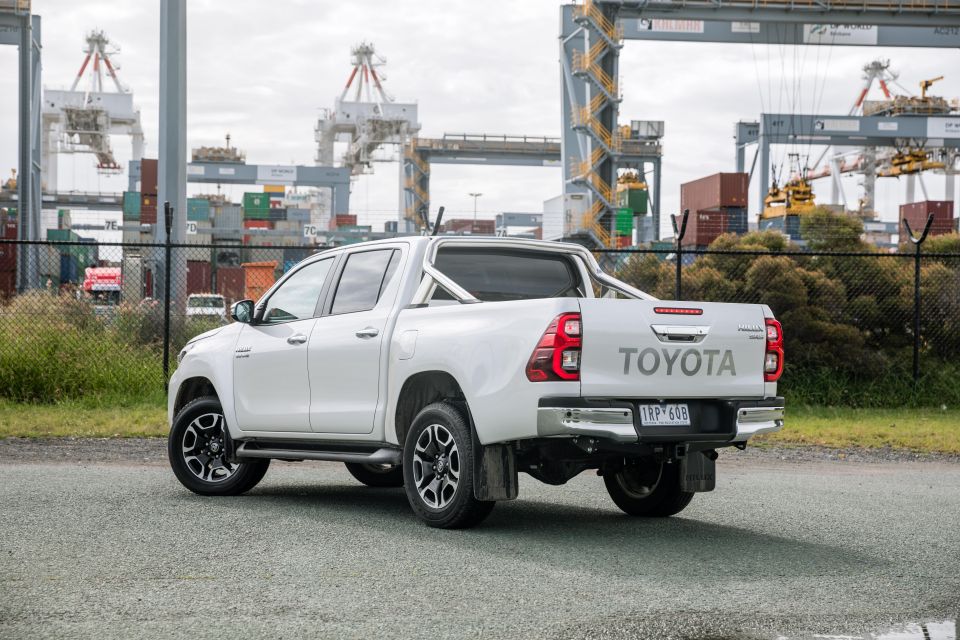

News Editor
New from
$57,920
excl. on-roads

News Editor
New from
$57,920
excl. on-roads


News Editor
New from
$57,920
excl. on-roads

News Editor
New from
$57,920
excl. on-roads
Quickly see how this car stacks up against its competition. Select any benchmark to see more details.
Where expert car reviews meet expert car buying – CarExpert gives you trusted advice, personalised service and real savings on your next new car.
Automatic transmissions have become more common over the years in utes, with the latest crop of dual-cab range-toppers not even offering the option of a manual.
There are still buyers out there who prefer to row their own gears, however, and the 2021 Toyota HiLux SR5+ is the most expensive ute from Toyota in which you can do just that.
It’s fresh off a substantial mid-cycle upgrade that’s given the HiLux more power, retuned suspension and steering, a revised interior, and brasher exterior styling.

The most immediately visible difference is the exterior styling, which is now more Texan Tacoma than Thai truck.
We can only imagine strong sales of the Ford Ranger 4×4 helped spur this raft of updates to Australia’s best-selling car. The Blue Oval contender still sits second in sales, but its 4×4 variant outsold the HiLux 4×4 last year.
The HiLux SR5+ goes up against the likes of the Ranger XLT, Isuzu D-Max LS-U, Nissan Navara ST-X and Mazda BT-50 GT manuals, all of which – excluding the Ranger – have also been updated or redesigned in the past 12 months.
That leaves the top-selling Toyota with a lot of competition.
The SR5+ is an SR5 with a few extra options, which raises the price from $57,920 before on-road costs to $60,420 before on-roads.
It stacks up well against a Ford Ranger XLT 4×4 manual dual cab. For that, as of the time of writing, you’re looking at $65,247 according to current drive-away pricing in Sydney for a private buyer once you add leather upholstery and the optional Tech Pack. Our HiLux, conversely, costs $65,901 drive-away.
Both the HiLux and Ranger command a premium over a similarly-specified Isuzu D-Max or Mazda BT-50. Even the flagship D-Max X-Terrain auto is priced at $59,990 drive-away, while a BT-50 GT manual is $56,990 before on-roads or around $61,000 drive-away.
As with all commercial vehicles, if you have an ABN then you should look into the government’s extended instant asset write-off policy.
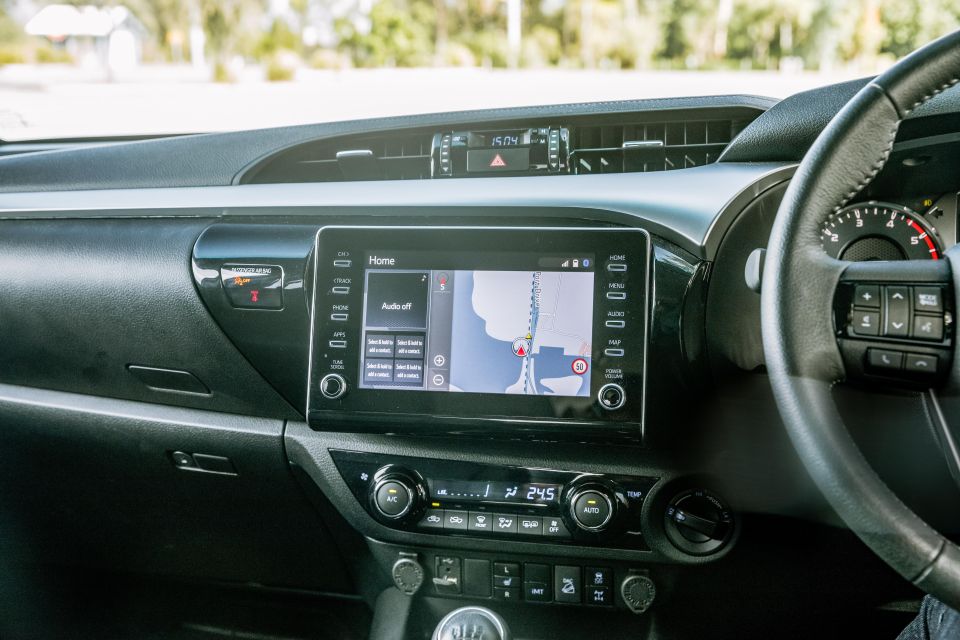
Buy your new car without the stress. It's fast, simple and completely free.

Great service from Travis and team, second time I have used this business would not hesitate to recommend them to anyone
Craig C.
Purchased a Ford Ranger in Sunshine Coast, QLD
CarExpert helped Craig save thousands on his Ford Ranger, now let us save you on your next new car.
Find a dealThe SR5+ is effectively a luxury package for the SR5, adding leather upholstery, heated front seats, and a power driver’s seat.
All 2021 HiLux models come standard with the following equipment:
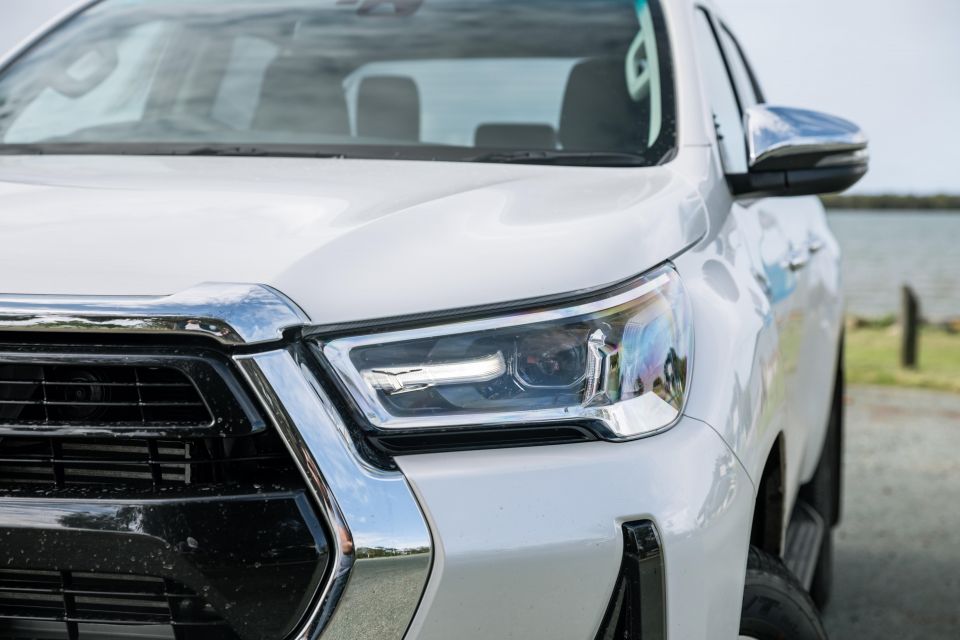
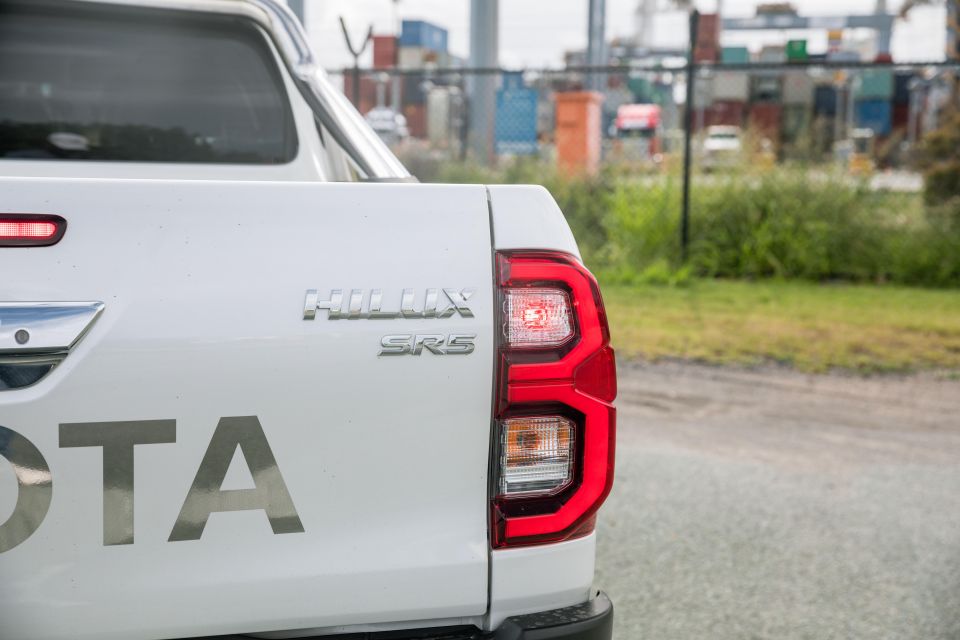
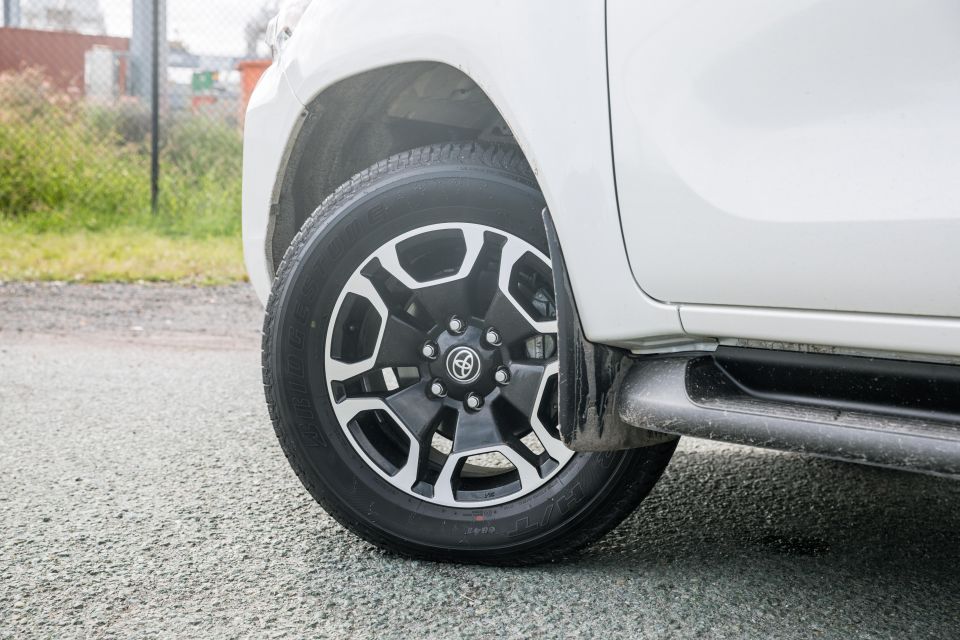
SR models add a six-speaker sound system and a front air-conditioned cooler box, while the SR5 adds:
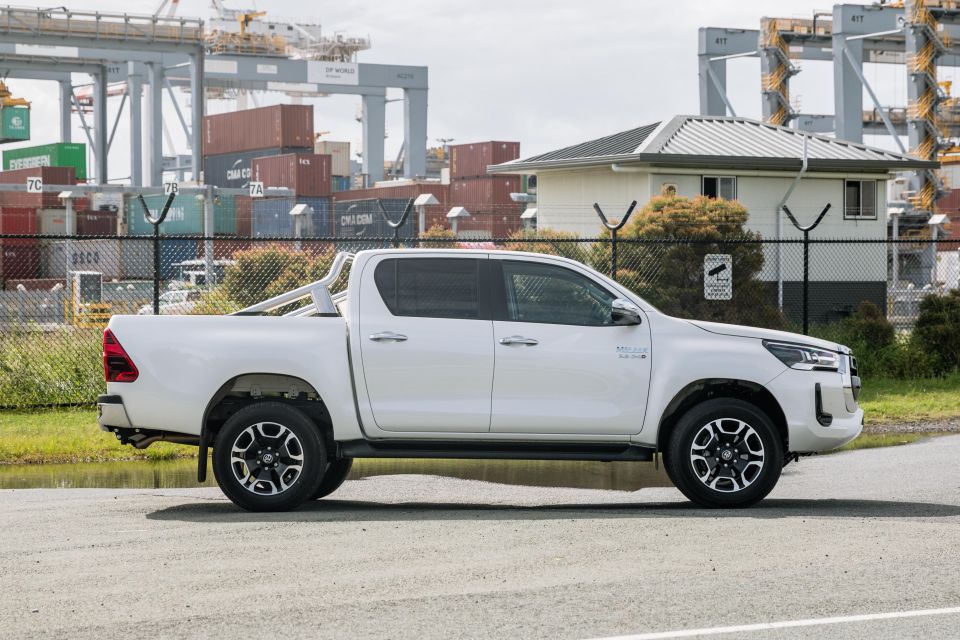
That makes the SR5 the cheapest private-buyer-focused HiLux, though you can spend more and get the brasher-looking Rogue and Rugged X.
Unfortunately, the SR5 is missing blind-spot monitoring and rear cross-traffic alert, both of which you’ll find in the cheaper Isuzu D-Max and Mazda BT-50.
Another feature missing from the HiLux is semi-autonomous parking assist, which you can get on the Ranger XLT when you select the optional Tech Pack.
While the Ranger XLT doesn’t have standard adaptive cruise control, Ford Australia recently announced it would make this feature standard though has yet to confirm if pricing will change.
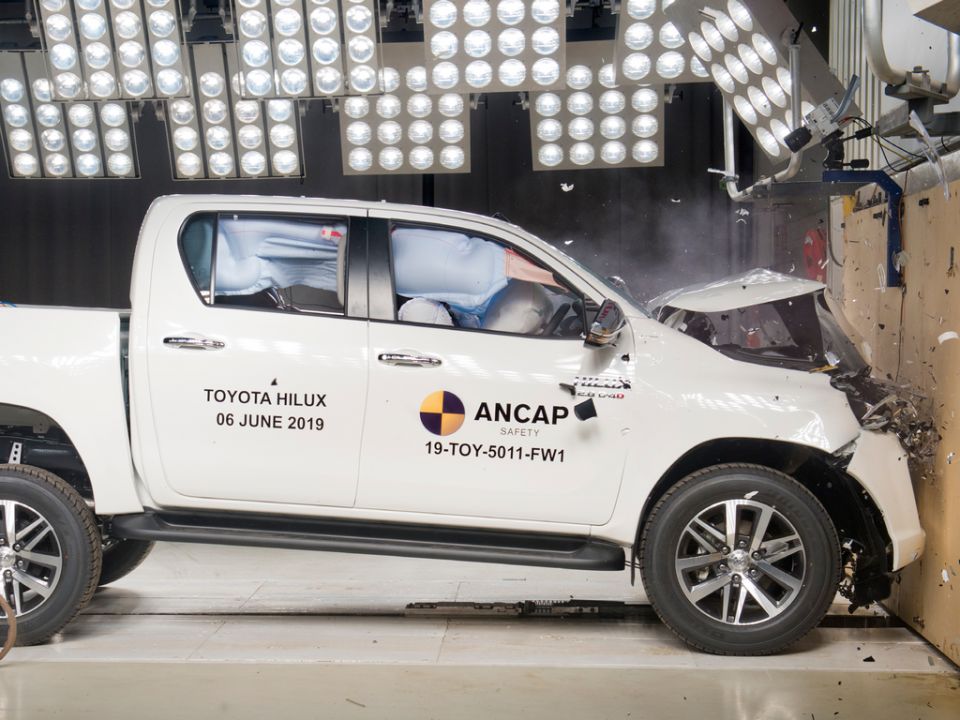
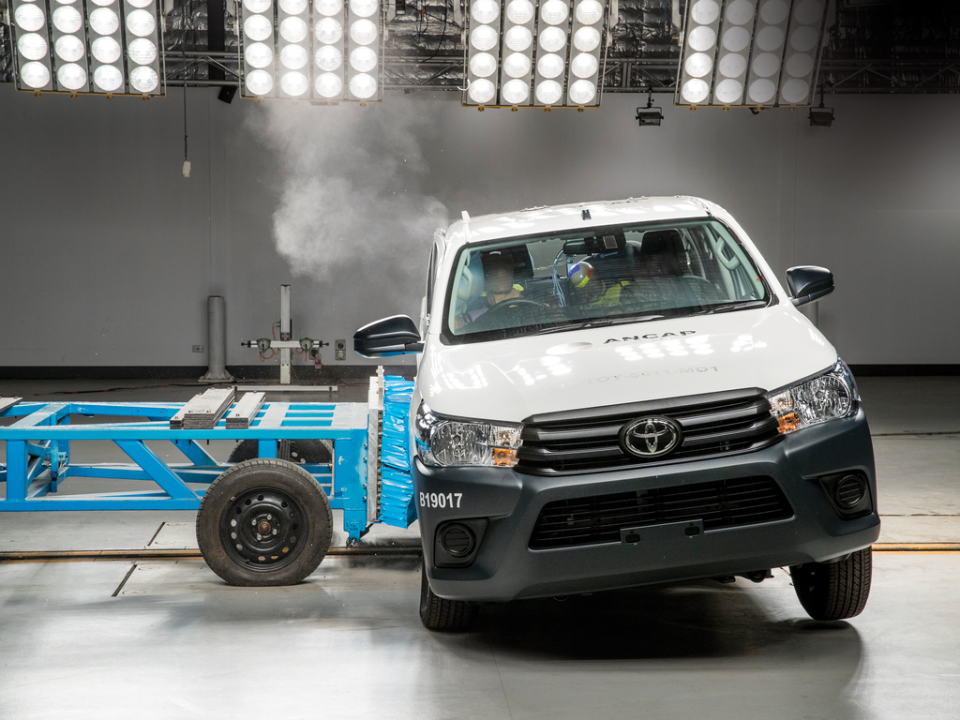
The 2021 Toyota HiLux update carries over the five-star rating awarded by ANCAP in 2019.
It scored 96 per cent for adult occupant protection, 87 per cent for child occupant protection, 88 per cent vulnerable road user protection, and 78 per cent for safety assist.
There are seven airbags for passive safety, along with autonomous emergency braking with pedestrian and daytime cyclist detection, lane-keeping assist, adaptive cruise control, and speed sign recognition.
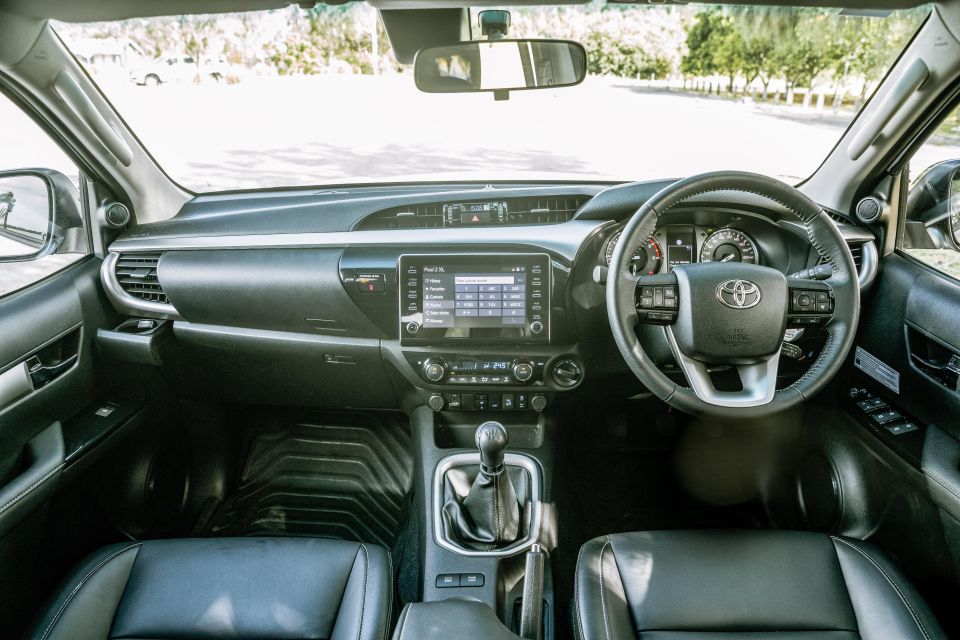
The HiLux’s interior at a glance looks similar to last year’s model but there have been some important changes, addressing past criticisms.
The infotainment touchscreen, for example, is now an 8.0-inch unit – up an inch from last year’s model – and is flanked by hard shortcut buttons.
There are also physical knobs for tuning and volume control. This makes it a lot easier to interact with on the move without taking your eyes off the road for too long.
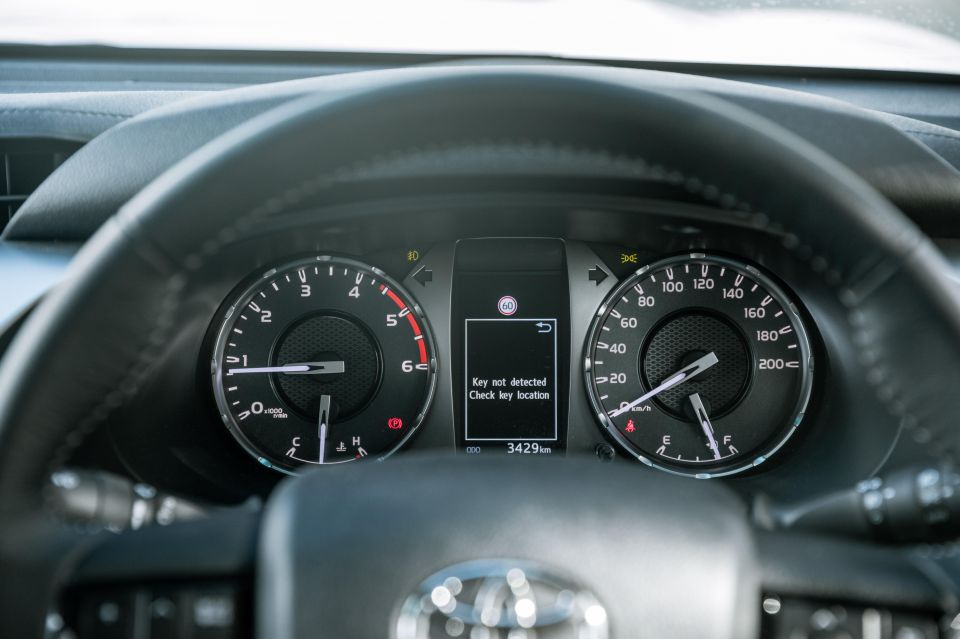
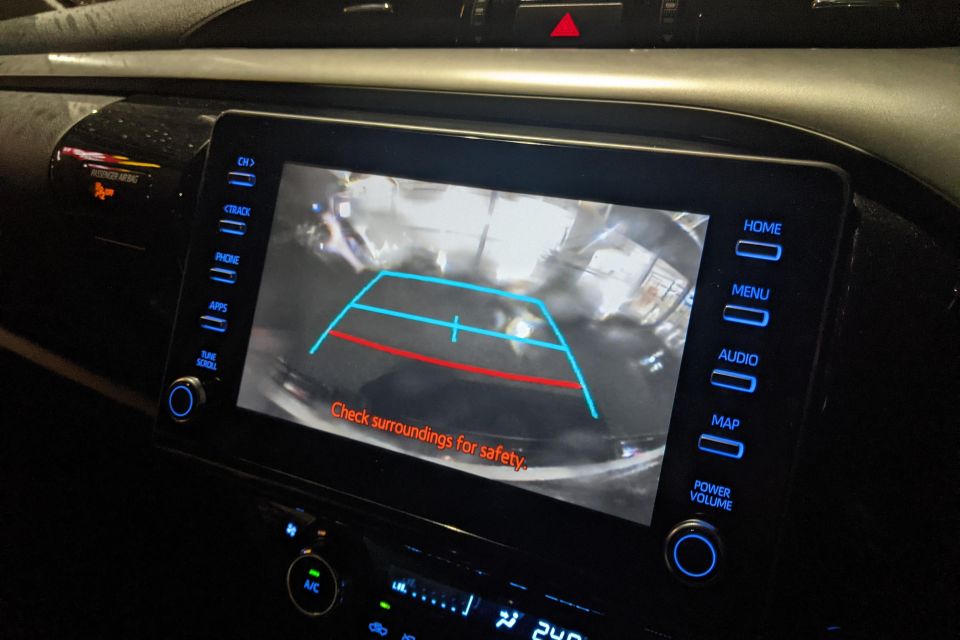
The interesting blue gauges of the pre-update HiLux are gone, but in their place are simpler and more legible ones.
They flank a 4.2-inch information screen with a digital speedometer.
There’s still plenty of blue in the cabin, including the soft blue backlighting of the controls. Everything is both easy to see at night and easy on the eyes.
The infotainment system is standard Toyota fare – drab graphics but responsive and fairly easy to navigate. Apple CarPlay and Android Auto are included.
There’s no surround-view camera, which would be handy with a truck this long. Instead, there’s a reversing camera and front and rear parking sensors. The camera quality is acceptable for the class, though its placement means rain drops can obscure your view.
Don’t go looking for the time on the touchscreen. Instead, Toyota has a little digital clock atop the dash – also with blue backlighting – which looks like it’s frequently checked out of the company’s parts-bin.
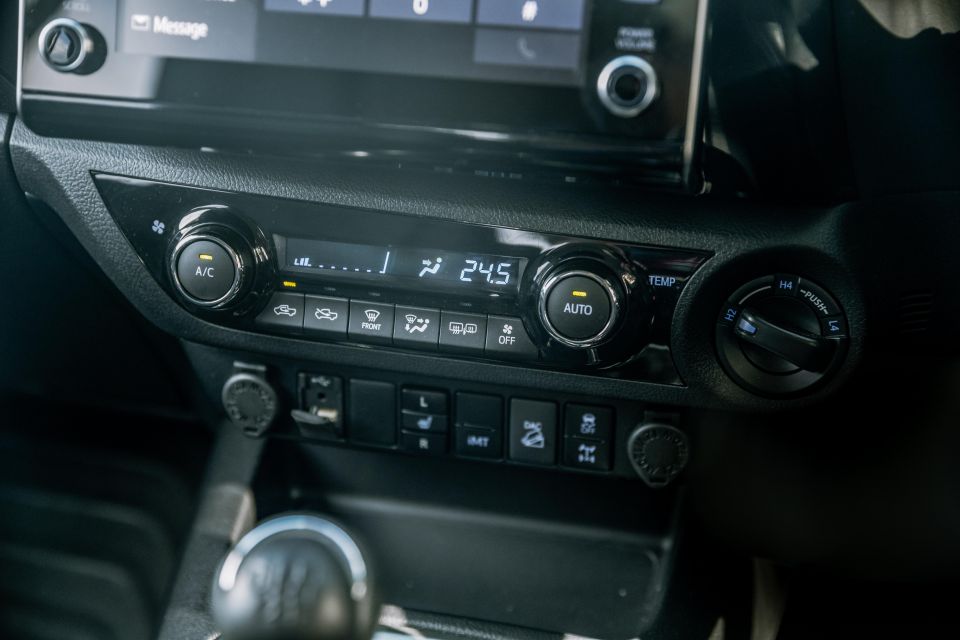
The climate controls will also be familiar to drivers of any number of modern Toyota products, though we think they’re attractive and easy to use. To the right sits the four-wheel drive mode dial.
Below the climate controls are buttons for the heated seats and off-road functions like the diff lock, while below that is a small tray with a rubberised floor. On the centre stack, you’ll find two 12V outlets plus a lone USB-A outlet.
There’s plenty of storage up front, with a split glove compartment and a large centre console bin.

As with most of its rivals, the HiLux’s interior is replete with hard-wearing (and hard) plastics. Toyota put stitching details on the dashboard but there’s nothing soft here unlike, for example, the dash top of a D-Max.
The steering wheel is leather-accented, and its array of buttons is logically labelled and laid out.
Cruise control is controlled via a stalk behind the wheel, which you’ll likely get used to quite quickly and should be muscle memory for existing Toyota owners.
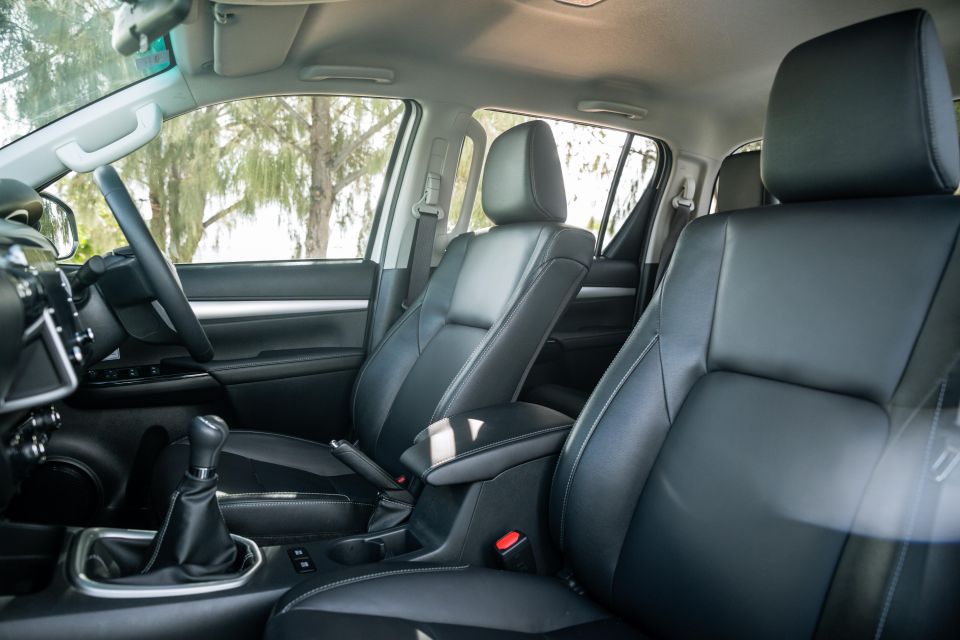
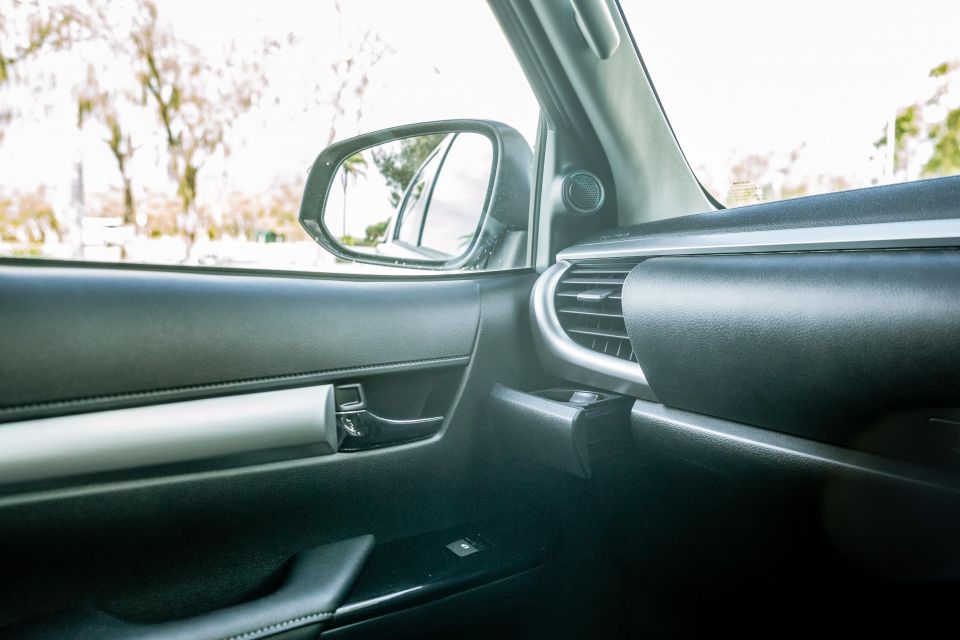
There may be only one cupholder in the centre console but Toyota still has its clever pop-out cupholders on either side of the dashboard, big enough for your typical 600ml or 1L bottles.
The seats are comfortable and supportive, while stepping into the rear there’s a competitive level of headroom and legroom.
Just watch out for those giant grab handles – we appreciate the extra support Toyota has given rear seat occupants but these just seem like they could be a hazard during a sudden stop or, worse, an accident.


There are no rear USB outlets but there are rear vents plus handy bag hooks on the soft, upholstered front seatbacks.
Child seats can be fitted using the three top-tether and two ISOFIX child seat anchor points.
The HiLux interior is showing its age against those of the D-Max and BT-50 but it’s functional and hard to fault.
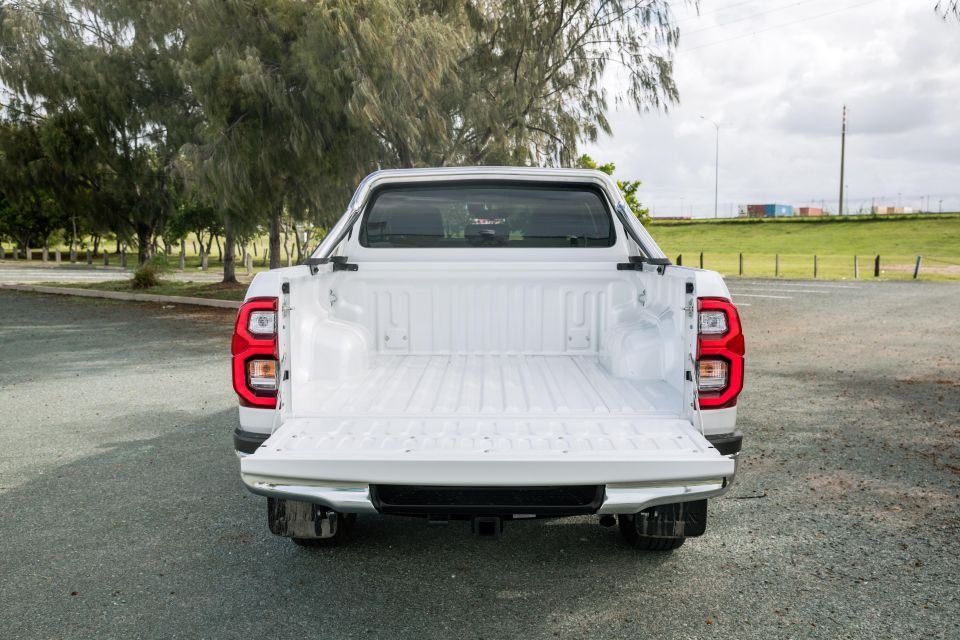
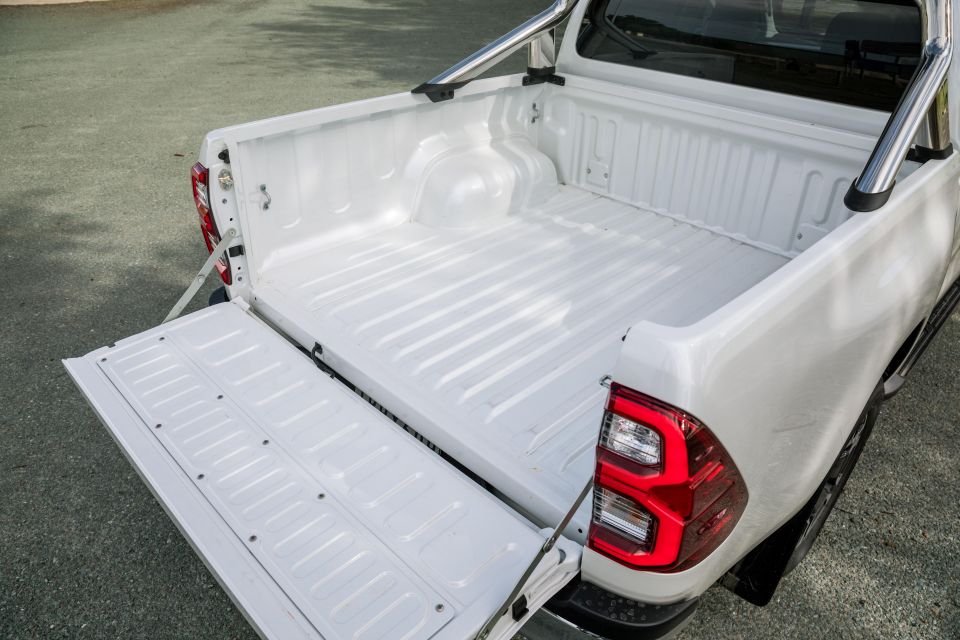
The tray measures 1569mm long, 481mm deep, and 1645mm wide, narrowing to 1109mm between the wheel arches.
That’s almost identical to a Ranger’s, with the HiLux’s tray slightly longer but 30mm shallower.
Unlike the Ford, there’s no power outlet back there.
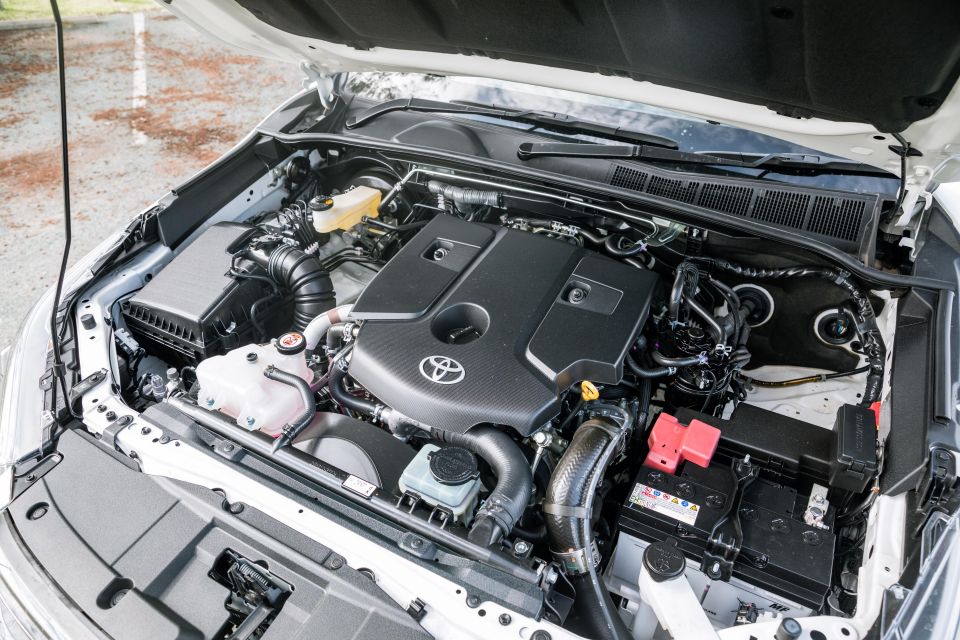
Where expert car reviews meet expert car buying – CarExpert gives you trusted advice, personalised service and real savings on your next new car.
With the update last year, the HiLux’s top-spec 2.8-litre turbo-diesel four-cylinder engine was given an extra 20kW of power for a total of 150kW. However, only models with the six-speed automatic transmission got a bump in torque, with six-speed manual models still offering 420Nm.
That means manual models like our tester are down 80Nm on those with the slushbox, as well as down 30Nm on rivals like the D-Max and BT-50.
Braked towing capacity is 3500kg, line-ball with the likes of the Ranger and Navara, while gross vehicle mass is 3050kg and payload is 1000kg.
If you’re venturing off the beaten path, the HiLux SR5 has an approach angle of 29 degrees and a departure angle of 27 degrees, with 216mm of ground clearance and a wading depth of 700mm.
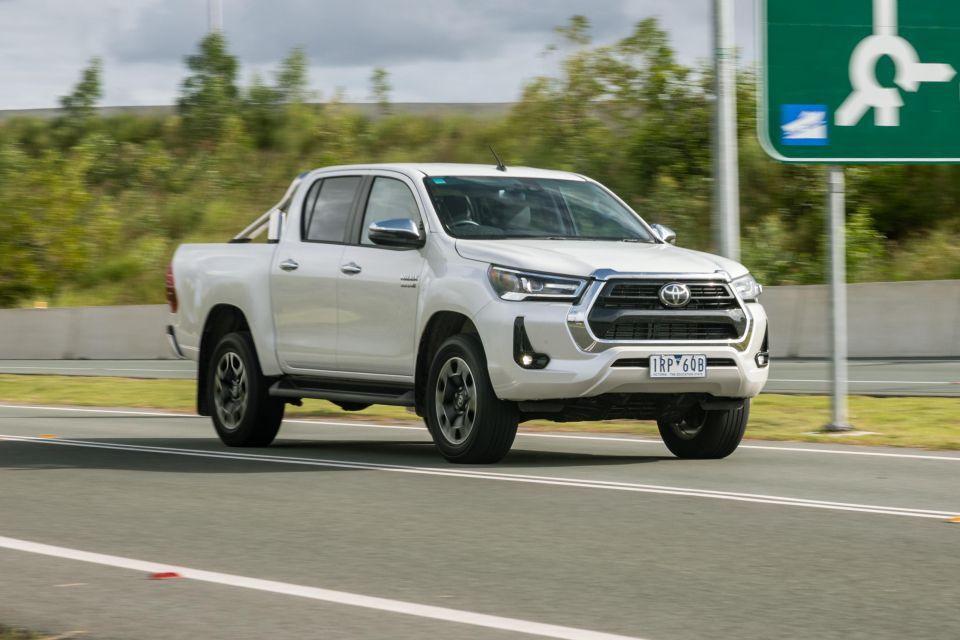
The steering is nicely weighted, being light enough to make this long beast relatively easy to pilot around town while still feeling substantial. It isn’t electrically-assisted like some rivals so there’s no steering-based lane-keeping assist feature on offer.
In terms of weighting, the steering is heavier-feeling than a Triton’s hydraulic unit or a D-Max’s electrically-assisted one but it doesn’t make the HiLux hard to handle.
The shifter and clutch action, likewise, is nice and meaty without feeling too high-effort. The throws are long and the inputs feel, for lack of a better term, ute-like, albeit not in an unrefined way.
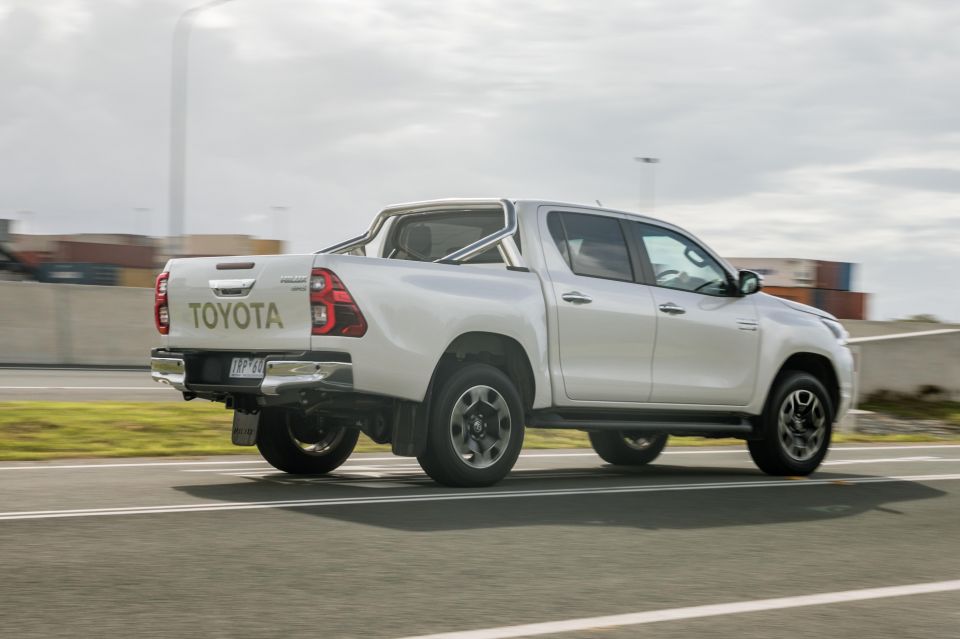
We have one gripe about the shifter, however. You don’t lift a ring or hold a button to push it up to the left for reverse gear, which takes some getting used to. It makes reverse awkward to engage and on at least one occasion, early on, I mixed up first and reverse. There also isn’t quite enough room in the footwell for a proper foot rest.
Toyota retuned the HiLux’s spring rates, shock absorbers and suspension bushes for 2021, which has improved ride quality. It’s adequate and there’s still some noticeable jiggling at the rear when going over bumps.
The front suspension absorbs bumps and ruts with aplomb but once the impact reaches the rear suspension the HiLux feels jittery.
Fortunately, the ride quality issue – hardly unique to the HiLux – is resolved by putting some extra weight in the tray and the cabin. Even with a small load and a car-load of occupants, there was a noticeable improvement in the HiLux’s ride quality.
Whether it’s tall gearing or a lack of insulation, the HiLux is somewhat noisy when driving around town. At 60km/h, the HiLux sits at 1500rpm in fourth gear and makes a bit of a racket, but shifting it to fifth then has it sitting at only 1000rpm.
Out on the highway, however, the HiLux’s cabin is pleasant and not much noise makes its way into the cabin.
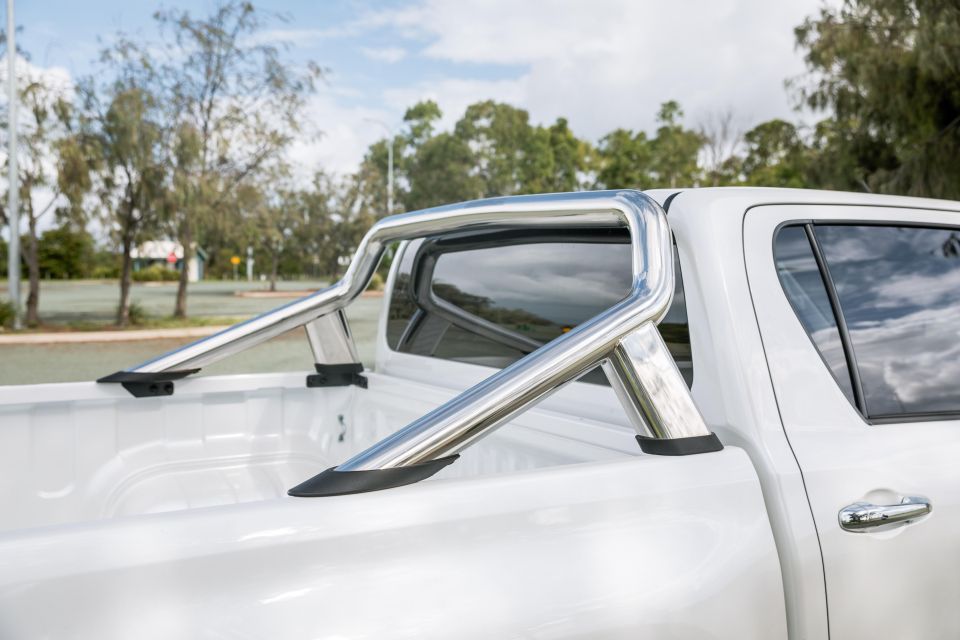
The rear of the HiLux doesn’t feel too squirrelly when unladen, with the stability control intervening smoothly when a loss of traction is detected.
The HiLux also feels confident and composed over gravel and poorly-surfaced roads, though we didn’t test its mettle on bona fide off-road tracks.
The diesel particulate filter did a burn twice during our week with the car.
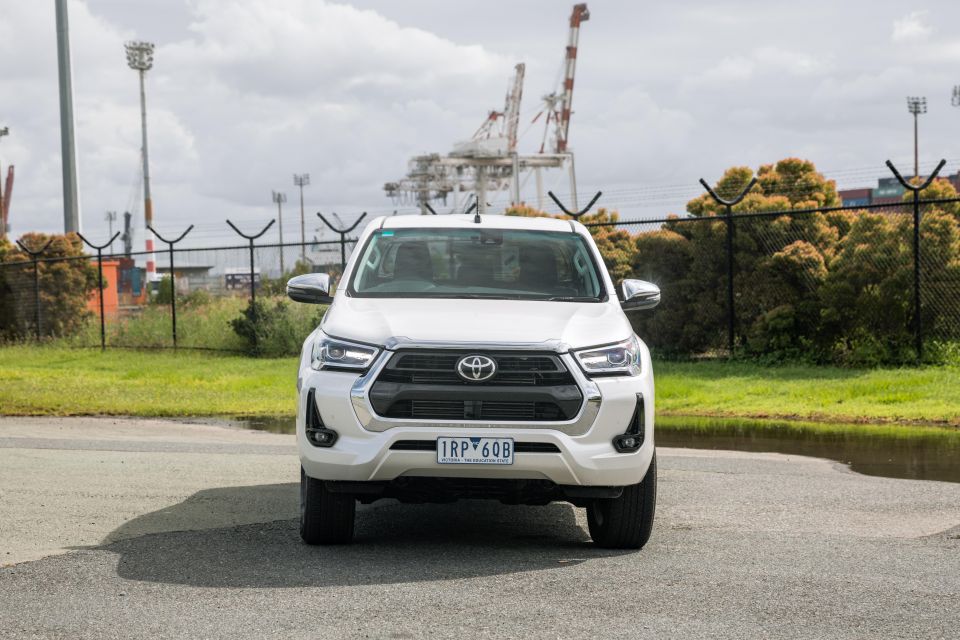
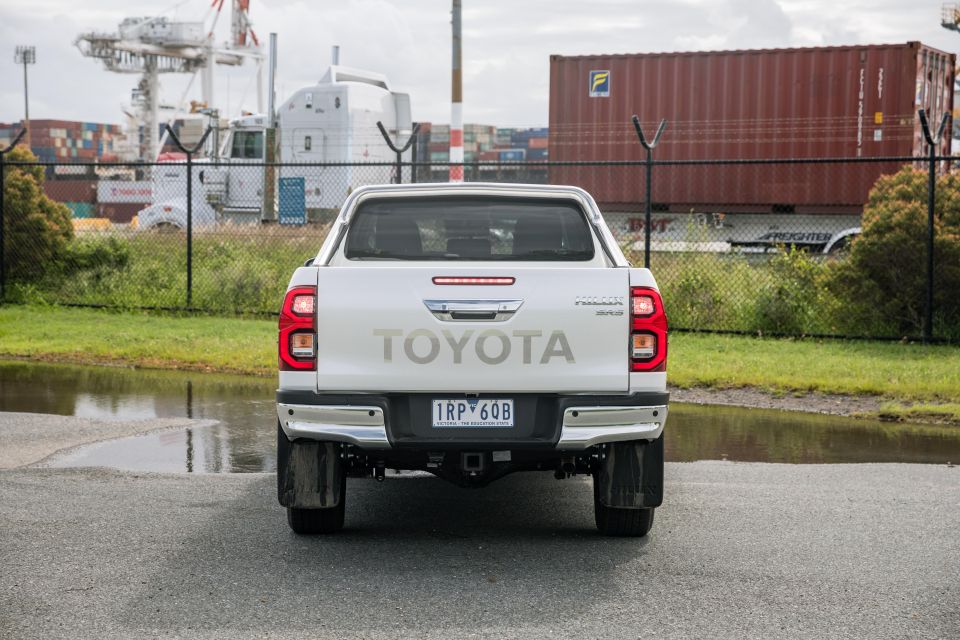
Over a mix of inner-city, suburban and highway driving, we averaged 8.2L/100km. That wasn’t far off Toyota’s combined figure of 7.7L/100km, though extra weight in the tray and more stop/start traffic could see that figure move closer to 10L/100km.
In addition to a five-year, unlimited-kilometre warranty, Toyota offers four services capped at $250.
However, the HiLux has shorter servicing intervals than its rivals, with a trip to your dealer required every six months or 10,000km.

Unless you’re a manual purist, the extra $2000 for an automatic HiLux seems like a wise investment.
The SR5+ also seems like the most sensible choice in the HiLux range if you’re a private buyer. The Rogue doesn’t add much, while the Rugged X’s array of off-road enhancements are handy but nothing you couldn’t just get fitted at your local ARB.
Besides, if you want a manual transmission, you can’t get one in Rogue or Rugged X trim.

Last year’s update has noticeably improved the HiLux’s interior and driving manners, with the added bonus of giving it a sharper look.
That said, the dual-cab ute segment is hotter than ever with the redesigned D-Max and BT-50, updated Navara, and fresh competition in the shape of the GWM Ute.
The HiLux doesn’t do anything glaringly wrong and is a thoroughly competitive truck. However, there are cheaper rivals and there are also rivals with longer servicing intervals, so it pays to shop around.
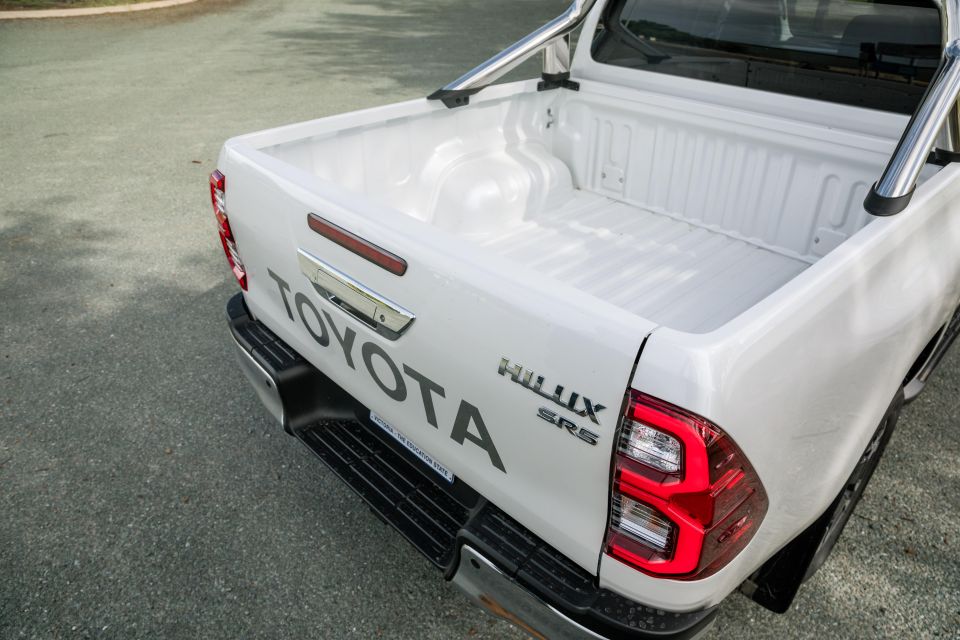
Click the images for the full gallery
Where expert car reviews meet expert car buying – CarExpert gives you trusted advice, personalised service and real savings on your next new car.
William Stopford is an automotive journalist with a passion for mainstream cars, automotive history and overseas auto markets.


Damion Smy
11 Hours Ago


Damion Smy
14 Hours Ago


Ben Zachariah
3 Days Ago


Matt Campbell
3 Days Ago


Derek Fung
7 Days Ago


Damion Smy
10 Days Ago